“Kimat Yachay is not just a newspaper; it is a testament to the power of collective action, reciprocity, solidarity , and an unwavering belief in the collective potential of Indigenous Peoples.”



Myrna Cunningham
Pag.2
Pag.2
Pag.3
NEWSPAPER OF PAWANKA FUND~
Kimat Yachay

~NUMBER 2 - SEPTEMBER 2023~
Education:

Through Action
Central and Eastern Europe, Russia Federation, Central Asia and Transcaucasia
Pag.6
Catalysts for an intercultural Sustainable Development Indigenous Heritage on International Day
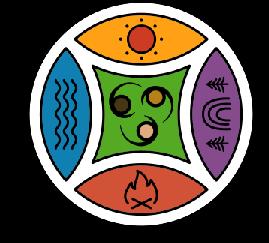

Pag.4

ONLINE EDITION & BLOG
Youth: Discover how these driven young leader
~BIMONTHLY
Honoring Indigenous Heritage on International Day
Celebrating Indigenous Identity on International Day
The International Day of Indigenous Peoples isn’t just a date on the calendar
Dear Readers,
As we gather the threads of culture, tradition, and unity, we find ourselves on the brink of a significant observance: the International Day of Indigenous Peoples. For Pawanka Fund, this day holds profound meaning as we continue to champion the causes and aspirations of indigenous communities around the world.
The International Day of Indigenous Peoples isn’t just a date on the calendar; it’s a testament to the vibrant tapestry of human existence. It’s a day when we acknowledge the inherent value of indigenous heritage, with its intricate languages, profound spiritual connections, and timeless practices that shape the essence of humanity. As we celebrate their identity, we also sow the seeds for a future that learns from the wisdom of the past.
As the world unites to commemorate the International Day of Indigenous Peoples, we embark on a journey of appreciation, understanding, and solidarity. Every year, on August 9th, this day serves as a global reminder of the vibrant cultures, profound traditions, and unique challenges faced by indigenous communities around the world.
Celebrating Diversity:
The International Day of Indigenous Peoples celebrates the incredible diversity of cultures and histories that indigenous communities bring to our collective human experience. From the Arctic tundra to the Amazon rainforest, and from the vast deserts to the highlands, indigenous peoples have cultivated a rich tapestry of languages, customs, and ways of life that enrich the global mosaic of humanity.
Resilience in the Face of Challenges:
Throughout history, indigenous communities have displayed remarkable resilience in the face of adversities. From colonization to forced assimilation, they have managed to preserve their identities and maintain their strong connections to their ancestral lands. This day serves as a tribute to their strength and determination, while also shedding light on the ongoing struggles for rights, recognition, and self-determination that many indigenous peoples still face.
Celebrating this day isn’t just about recognizing indigenous communities—it’s a call to action for all of us. It’s a moment to reflect upon the resilience of indigenous people in the face of adversity, a chance to stand in solidarity with their struggles for recognition, land rights, and cultural preservation. By embracing the rich diversity that indigenous cultures offer, we enrich our own perspectives and contribute to a world that thrives on inclusivity.
At Pawanka Fund, we firmly believe that unity is strength. As we join hands with indigenous communities, we foster connections that transcend boundaries. Our efforts aren’t just about financial support; they’re about creating a platform where indigenous voices are heard, where their stories are shared, and where their contributions to sustainable de-
As we join hands with indigenous communities, we foster connections that transcend boundaries

velopment and conservation are acknowledged and celebrated.
As we mark the International Day of Indigenous Peoples, let us remember that our journey towards a more equitable world is ongoing. Let’s pledge to walk alongside indigenous communities as allies, to learn from their experiences, and to amplify their narratives. Together, we can cultivate a world where every culture is honored, every heritage preserved, and every voice uplifted.
With gratitude,
Myrna Cunningham Chairperson, Pawanka Fund
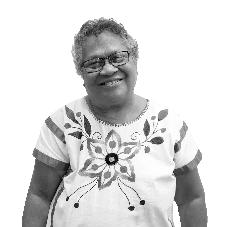
Honoring Indigenous Heritage on International Day
Building Bridges for the Future:
The International Day of Indigenous Peoples isn't just about reflecting on the past; it's about building bridges for the future. It's an opportunity to highlight the importance of dialogue, collaboration, and mutual understanding between indigenous and non-indigenous communities. By working together, we can create a world where indigenous knowledge is respected, cultural heritage is preserved, and the voices of indigenous people are heard in matters that affect them directly.
On this day, let us come together to celebrate the richness of indigenous cultures and to reaffirm our commitment to supporting indigenous rights and aspirations. As we honor the International Day of Indigenous Peoples, let it also be a day of reflection—a time to recognize the contributions and resilience of indigenous communities, and to ensure that their stories, struggles, and achievements continue to be woven into the fabric of our global consciousness.
Pag.2 EDITORIAL
Kimat Yachay NUMBER 2 - SEPTEMBER 2023 www.pawankafund.org
Warm regards, Myrna Cunningham Chairperson, Pawanka Fund
Inspiring Insights from Pawanka Fund’s Webinar
Step into the dynamic world of Indigenous youth empowerment through our column highlighting the captivating interventions of young voices during the “Indigenous Voices for the Present and the Future” webinar. Held on August 9, 2023, in honor of the International Day of Indigenous Peoples, this webinar showcased the powerful perspectives and visions of the next generation.

Discover how these driven young leaders passionately addressed contemporary challenges and future aspirations. Explore their innovative solutions, aspirations, and contributions to the preservation of Indigenous cultures and sustainable development, all supported by Pawanka Fund’s unwavering commitment
Brandi Ahmie
Representative of youth from North America
“We, in connection with the land, have a great opportunity to heal ourselves, to heal who we are, and find a pathway and a purpose in this life we are all connected as Indigenous People”
Beatriz Morán
Representative of youth from Latin America
“We must teach young people and children to appropriate our cultural identity. We should feel proud for having our own worldview, a law of origin that governs us”
Aibek Samakov
Representative of Eurasia
“Climate change is not purely environmental issue. It is an environmental and cultural issue”
Maria Azhunova Tokerau Diaz
Representative of Eurasia
“We want to include in the curriculum of schools the traditional indigenous knowledge components which is generally shared and provided by the indigenous cultural practitioners and elders who are also members of our network”
Chandra Tripura
Representative youth from Asia
“Indigenous youth are the key agent of all changes including climate change mitigations”
Representative of The Pacific
“Asesor en Energías Renovables de la Municipalidad de Rapa Nui, también es pescador y miembro de la Asociación de Pescadores Hanga Roa O Tai”
Martha Sengeruan
Representative of Africa
“In the school we created we have different activities related to environmental protection. The school serves as a center for training, connection and protection of the environment”
Maria Jose Fernandez Funa-ay Claver
Representative of youth from The Pacific
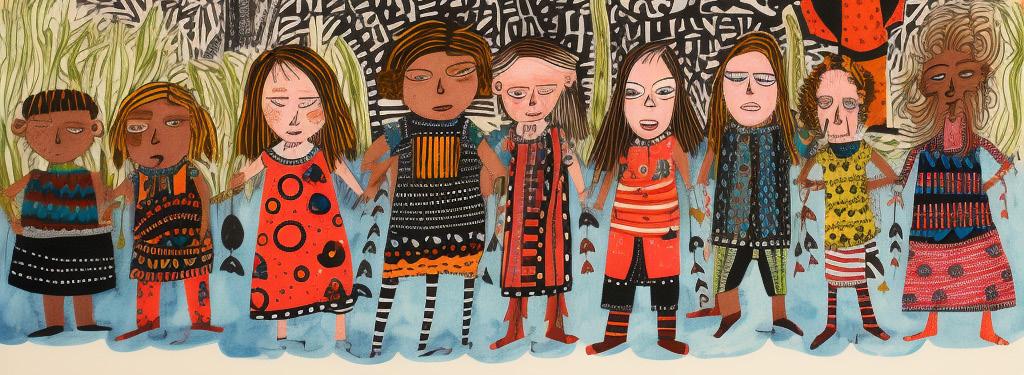
“Climate change is not purely environmental issue. It is an environmental and cultural issue”
Representative of youth from Asia, Name
The youthful, the future, they are the second liners that will continue the long fight for justice, and they will inherit their communities history of resistance, and build it to be stronger than before in the world where society and technology is rapidly developing
Khadija Juma
Representative of Eurasia
“Our work is engaging with the community and stakeholders in decision making promoting sustainable and responsible development, and, above all, is preserving our environmental, social and cultural integrity of Lamu County”
Pag.3 YOUTH Kimat Yachay NUMBER 1 - JULY 2023 www.pawankafund.org
Catalysts for an intercultural Sustainable Development

Welcome to the Philanthropy Corner, a space dedicated to exploring the power of giving and the evolving landscape of philanthropy.
In the intricate web of global progress, it's often the smallest threads that weave the most significant impact. When we think about the United Nations' Sustainable Development Goals (SDGs), it's impossible to overlook the immense contributions of indigenous communities. Their age-old wisdom, harmonious way of life, and intimate connection with the Earth are driving forces behind sustainable development.
We must remember that the Indigenous Peoples have self-imposed a mandate to be the guardians for the survival of the human species and the care of Mother Earth. This self-imposed mandate comes from the worldview of the Indigenous Peoples and is prior to all the coordinated efforts of the multilateral system of United Nations. But in addition, this ancestral knowledge is based on the millennial observation of
nature and the environment and is scientific knowledge, we believe that this knowledge should be combined with scientific management.

Pag.4 CENTRAL THEME Kimat Yachay NUMBER 2 - SEPTEMBER 2023 www.pawankafund.org
Stewards of the Land:
Indigenous peoples have long been stewards of the land, passing down ancestral knowledge about sustainable resource management. From regenerative agriculture to responsible forestry, their practices have stood the test of time. By preserving biodiversity, preventing deforestation, and adopting eco-friendly techniques, they offer a blueprint for achieving SDG 15 (Life on Land).
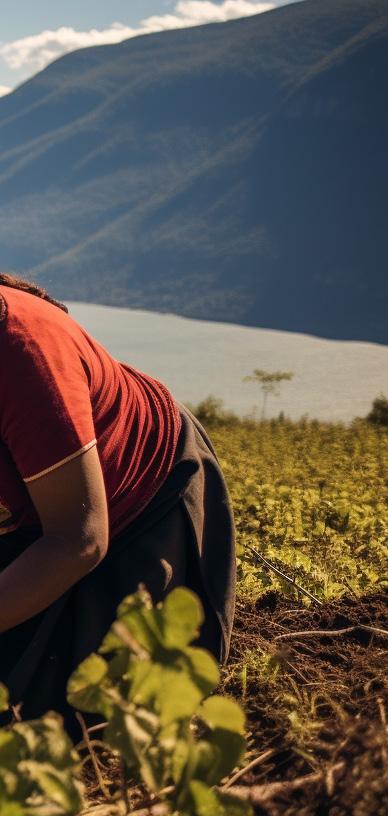
Guardians of Traditions:
Cultural preservation is a cornerstone of sustainable development. Indigenous communities hold the key to a treasure trove of traditional knowledge, offering insights into climate resilience, medicinal plants, and eco-friendly construction. By integrating indigenous practices into modern solutions, we can advance SDG 11 (Sustainable Cities and Communities) and SDG 12 (Responsible Consumption and Production).
Climate Resilience:
In an era of climate change, indigenous communities are at the forefront of adaptation and resilience. Their deep understanding of local ecosystems enables them to anticipate shifts and respond effectively. By sharing their insights, we can bolster efforts to achieve SDG 13 (Climate Action) and SDG 14 (Life Below Water).
Promoting Inclusivity:
Indigenous communities remind us that sustainable development must be inclusive. They advocate for equal rights, gender equality, and community engagement, aligning with SDG 5 (Gender Equality) and SDG 16 (Peace, Justice, and Strong Institutions). Their emphasis on intergenerational knowledge transfer supports SDG 4 (Quality Education) and SDG 10 (Reduced Inequalities).
Promoting Inclusivity:
Indigenous communities remind us that sustainable development must be inclusive. They advocate for equal rights, gender equality, and community engagement, aligning with SDG 5 (Gender Equality) and SDG 16 (Peace, Justice, and Strong Institutions). Their emphasis on intergenerational knowledge transfer supports SDG 4 (Quality Education) and SDG 10 (Reduced Inequalities).
Global Partnership:
The path to sustainable development is a collaborative one. Indigenous communities embody the spirit of global partnership by engaging with local, national, and international stakeholders. Their participation bolsters SDG 17 (Partnerships for the Goals) and underscores the importance of working together for a shared future.
As we navigate the complexities of the modern world, let us never underestimate the contributions of indigenous communities to the Sustainable Development Goals. Their role isn’t just important—it’s essential. By recognizing their wisdom, respecting their rights, and fostering a spirit of collaboration, we can weave a future where sustainability is the thread that binds us all.
Kimat Yachay
Board of Directors:
Dr. Myrna Cunningham
Carla Bush
Oscar Aguilar
Editorial board:
Oscar Aguilar
Juan David Burbano
Editorial design: Feeling.com.co
Pawanka Executive Team:
Carla Bush
Maria Jose Salinas
Nidia Bustillos
Emma Pineda
Edna Kaptoyo
Lucie Maranan
Contact: pawanka@pawankafund.org
Pag.5 Kimat Yachay NUMBER 2 - SEPTEMBER 2023 www.pawankafund.org
PBut in addition, this ancestral knowledge is based on the millennial observation of nature and the environment and is scientific knowledge
“ “
The path to sustainable development is a collaborative one. Indigenous communities embody the spirit of global partnership by engaging with local, national, and international stakeholders.
Samburu Women Trust Their Future.

Salante Leburkash, the Chairwoman of Merilosho Cultural Manyatta has lived through many droughts in her village in the vast North Kenyan pastoralist territory. In fact, this climatic disaster had wreaked havoc on planned activities in the community. But she and her village mates were determined to push through with the project. She rued, however, that many families were not there with them for these activities. They had moved in search of refuge and relief from the punishing drought. Those presents will someday share the knowledge and skills gained in these workshops, she assured herself.
She pondered on the condition of village women and children; knowing the stories of her mother and grandmothers, of older women who had to live with the harsh environment, the restrictions and treatment of Samburu women imposed by their culture. She vowed to do something for herself and her daughters so they could have a different future yet rooted in their culture. She envisioned Samburu women who were empowered, knowledgeable, assertive of their rights. Those who came before them and many today are silent voices, women and girls denied of their rights and robbed of opportunities.
As participants gathered for the last of a series of workshops, Salante was not alone in this excitement and thrill. She felt the collective joy of more than three hundred women and other community members who have acquired knowledge, courage and confidence in embracing their culture as a pastoralist tribe.
She vividly recalls that the initiators, the Samburu Women Trust (SWT) encouraged their attendance and participation in the project. In the inception workshop, community elders and women were informed of the project’s objectives. Salante and her fellow women of Merilosho cultural manyatta signified their interest to join the collective struggle and voice out SWT initiatives in this pilot project.
The subsequent activities saw Salante as an empowered, capable enabler of other Samburu women and youth who were coaxed out of their shell, of personal and cultural insecurities and fears. With the intergenerational mixed gender learning interaction ses-
sions, the youth appreciated the vast oasis of their elders’ expertise from which grew their awareness of the multi-faceted indigenous knowledge.
This was followed by the SWT Youth mentorship meetings in two youth camps where the indigenous youth were taught to emulate Samburu role models. Salante and Ntinina Leosono, the latter a volunteer, as SWT facilitators helped the young women identify the challenges they face and the doors of opportunities open to them to overcome these obstacles so they can be in a better situation.
The Samburu community affirmed and validated their culture which was projected and appreciated nationally and globally.
The project entitled ”Nurturing Culturally Grounded and Socially Empowered Samburu Women and Girls in Northern Kenya” was supported by the Indigenous Ways of Knowing and Learning Fund or the Pawanka Fund and implemented by the Samburu Women Trust from JULY 2015 – JUNE 2016.
“
“
Pag.6
The Samburu community affirmed and validated their culture which was projected and appreciated nationally and globally
PARTNER’S INITIATIVES Kimat Yachay www.pawankafund.org
As participants gathered for the last of a series of workshops, Salante was not alone in this excitement and thrill
Education Through Action
Central and Eastern Europe, Russia Federation, Central Asia and Transcaucasia
To sow the seeds of cultural awareness among the children is to prepare them to stand firmly on their tradition and indigenous identity. This is what the Partnership for Culture-creating Schools of Altai in Russia Federation embarked on with their Education
Through Action project which focused on the sacred Karakol Valley. Through a film showing (“Standing on Sacred Ground”) in five Altaian villages; a contest on Traditional Knowledge projects (drawings, photography, carvings, etc.); and a summer camp program, interest was stirred and awareness was shaped about traditional cultural values.
Within the school year, the competitive activities yielded a group of 44 children who were chosen for a summer camp program called “Protectors of the Karakol Valley.” The annual program adapts traditional methods of education where the participating children acquired various skills and invaluable knowledge about Altaian philosophy and various aspects of their culture such as playing traditional games, preparing traditional Altaian foods, and playing traditional instruments. It was their familiarization with the significance and history of their Sacred Valley. To guide them on their learning highway was a toponymic map of the Sacred valley which was to guide their management and protection program to limit development of important locations which they had identified. They aimed to gather information on the origin of names of significant and sacred places in the Karakol Valley as a way of preserving traditional knowledge and for the children to have a sense of belonging and ownership of these local places and their names. Prior to immersion, the children were oriented on map
reading. This was followed by the organized visits to Karakol Valley schools in the villages where the children held conversations and exchanges with the elders to learn, gather and document the exact traditional names of places to be recorded on a map. Legends, stories or events about the valley were also gathered.
As a result of this exchange and mapping, more than 20 informational signages were installed and the Turgak Historical and Cultural Area was established at the entrance of the valley. Likewise, improvements to the sacred spring at the site and the parking area were accomplished.
The results of the project were published in booklet and brochure formats and posted on Uch Enmek Ethnocultural Nature Park’s website. The publication described the valley’s historical and cultural monuments and sites. There are plans to also publish and popularize the collected stories and legends about the valley.
A teaching methodology was innovated and tested about Traditional Knowledge in the modern context. This established and enriched the relationship and interconnectedness of the local community and schools with their protected area. The project implementers achieved a level of strategic working relations with the schoolchildren in the identification of Traditional Knowledge drawn from the local natural landscape that has international significance.

The showing of a film that helped the local communities identify parallel realities with other indigenous communities aided in their understanding of their particular culture and how diverse cultures thrive in contemporary times.
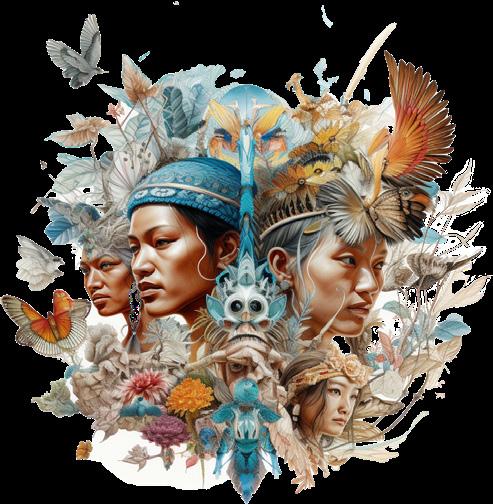
The challenges did not dampen the spirit and energy of the project team. Though initially there were difficulties in mobilizing the local community, and problems in convincing the indigenous population to appreciate the traditional norms for specific activities and dissuade them from the “new” cultural tendencies that have confused them, the learning process was fruitfully carried out. They acknowledge the need to address this continuing concern by pursuing the setting up of institutions for upholding Traditional Knowledge. Already, the Arusvaty Ethnocultural Scientific Education Center is focused on bridging conceptual gaps of traditional and contemporary knowledge.
The project Education Through Action was implemented by the Partnership for Culture-creating Schools of Altai in 2016 with support from The Pawanka Fund.
Pag.7 Kimat Yachay www.pawankafund.org
PARTNER’S
As a result of this exchange and mapping, more than 20 informational signages were installed and the Turgak Historical and Cultural Area was established at the entrance of the valley
INITIATIVES
Pacific
Aloha ‘Āina Fellowship Program
The Aloha‘Āina Fellowship is a long-term mentorship program based on the Island of Molokai Wherein young adults are trained in Indigenous natural resource management, cultural resource management, and Indigenous food systems. Entering its second year, this weekly program has proven successful in promoting a traditional and holistic approach to caring for the land and building capacity in young leaders to revitalize food sovereignty in Hawaii.Our goals for year two are focused on revitalizing traditional Hawaiian Food systems, particularly fishponds and taro farming, as a way to increase local food production while
Eastern Europe
The“EducationThroughAction’’ project took place in 2016. Its goal was to activate the collective memory of the Indigenous population of the Sacred Karakol Valley by organizing a campaign to“education through action.”The project’s main concept is that the Knowledge of Indigenous peoples is preserved in Sacredlands, while human activity activates the flow of that knowledge, reanimating collective memory.The project resulted in creation of a toponymic map of cultural heritage sites with Altaian placenames,the majority of which bear their own legends containing explanations of those names. One Of these heritage sites are the Karakol Culture burial sites: a contemporary ethnocultural interpretation of the artifacts found within are very promising for the creation of a new type of ecosystem–a Sacred landscape ecosystem.This project will seek to preserve this culture by organizing a documentation process for these sites and to “museum-ify” one of the burial mounds at great risk of destruction situated within the boundaries of Karakol village.
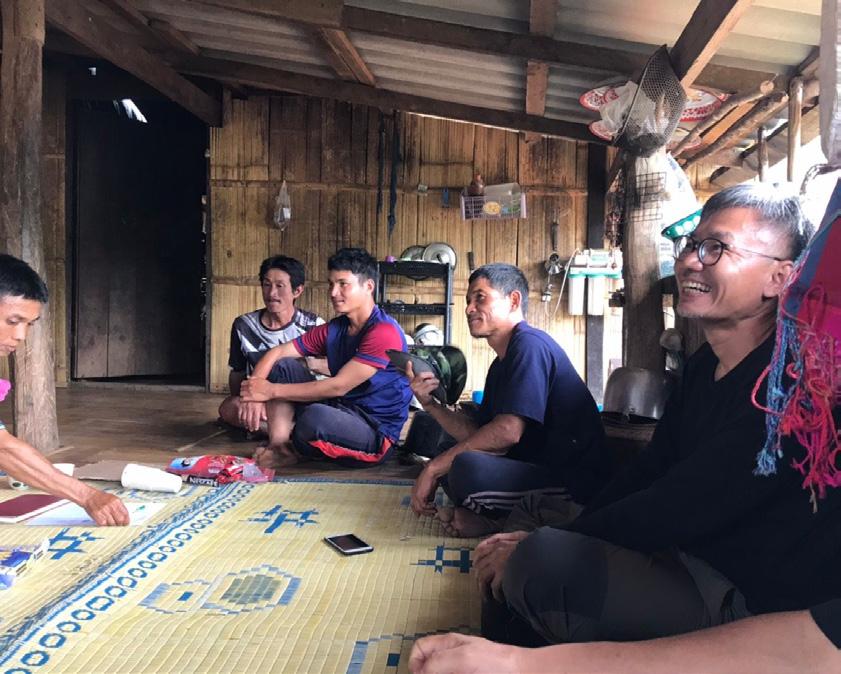

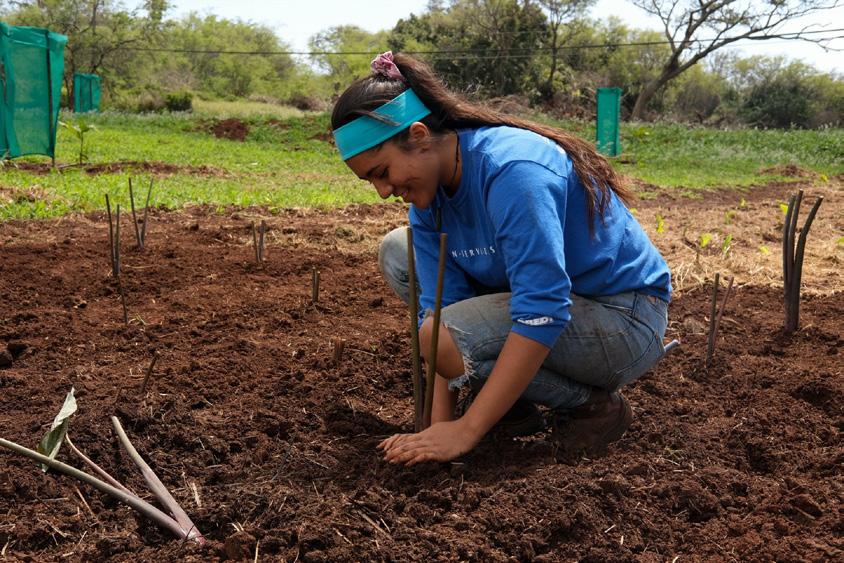
YAKANAL Indigenous Youth Cultural Exchange Program

YAKANAL:
Mother Moon
North America The Arctic
We propose to continue Mother Moon, an Indigenous-led effort to research, protect, and share traditional knowledge of the Moon to animate ancestral wisdom and practice related to women’s/non-binary and community wellbeing. Through intercultural collaborations including the Maya/Zapotec/ Mixtec/Pueblo young adults and elders, we hope to nourish unique attributes connected to the Moon in the context of fertility,
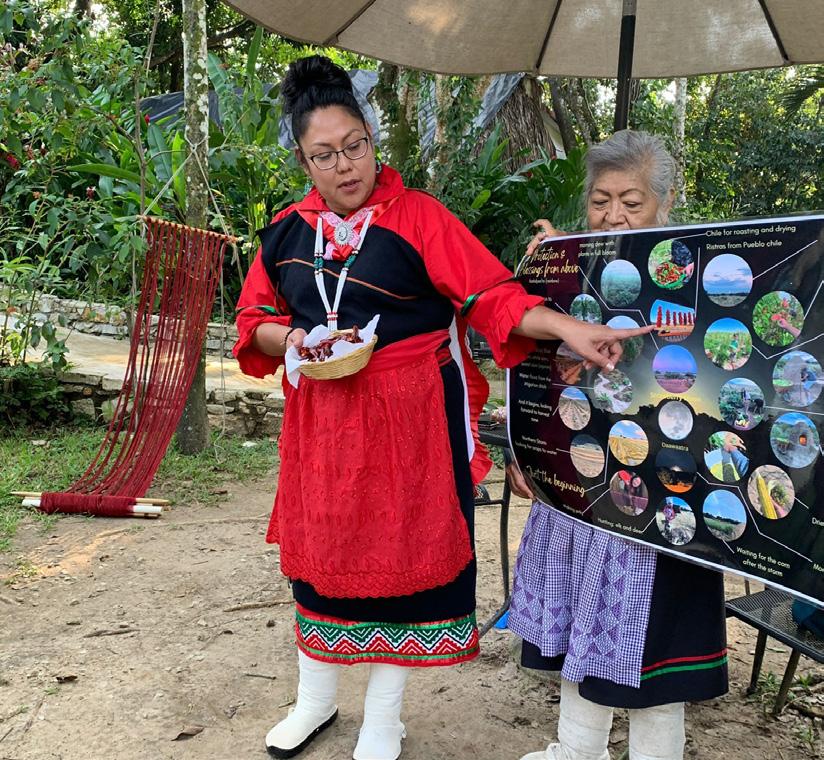
midwifery, weaving, natural pigments, native foods, plant medicine, and cultural astronomy. The project aims to create and strengthen connection with land and sky–by highlighting the importance of a sense of place. Honor the source–by recognizing, respecting, and sustaining the elder’s knowledge.Share knowledge and practice–through cultural exchange and by anchoring the work in local projects with global impact.
Arctic Indigenous Youth Leaders’ Summit
Saami Council is hosting the 6th Arctic Leaders’ Summit(ALS6)for Arctic Indigenous Leaders inNovember 2019. Arctic Indigenous Peoples Leaders will meet and discuss common concerns such as environmental and socio-economic impacts of the rapid environmental and climate changes in The Arctic, most of which are considered fragile ecosystems.Youth Leaderswill gather for a ArcticIndigenous Youth Leaders’Summit, where youth from the circumpolar region for 1,5 day will discuss theALS6agenda and share ideas and dreams for their future and prepare for the out come with ALS6.This project proposal is to support the Youth Summit event.

Asia
Network
Promotion and extension of traditional plant species for food security and income generation to sustain Indigenous communities in Thailand
The ultimate goal is to promote and extend selected traditional plant species for enhancing food security and income for Indigenous families and communities. This builds on the outcome from previous project by selecting a few potential plants which have high nutritional value and will serve as pilots for household income generation activities and community fund-implemented in three pilot areas. The project will be undertaken in partnership and collaboration with academic institutions such as Maejo University andChiang RaiRajabhat University.Outcomes and knowledge gained from implementation will be widely shared with NIPT and CIPT members,as well as Indigenous communities.
‘Āina Momona
Protectors of the Karakol Valley initiative group
Arctic Indigenous Youth Leaders’ Summit
Pag.6 PARTNERS Kimat Yachay NUMBER 1 - JULY 2023
Home of the Sun Gods
of Indigenous Peoples in Thailand (NIPT)
























